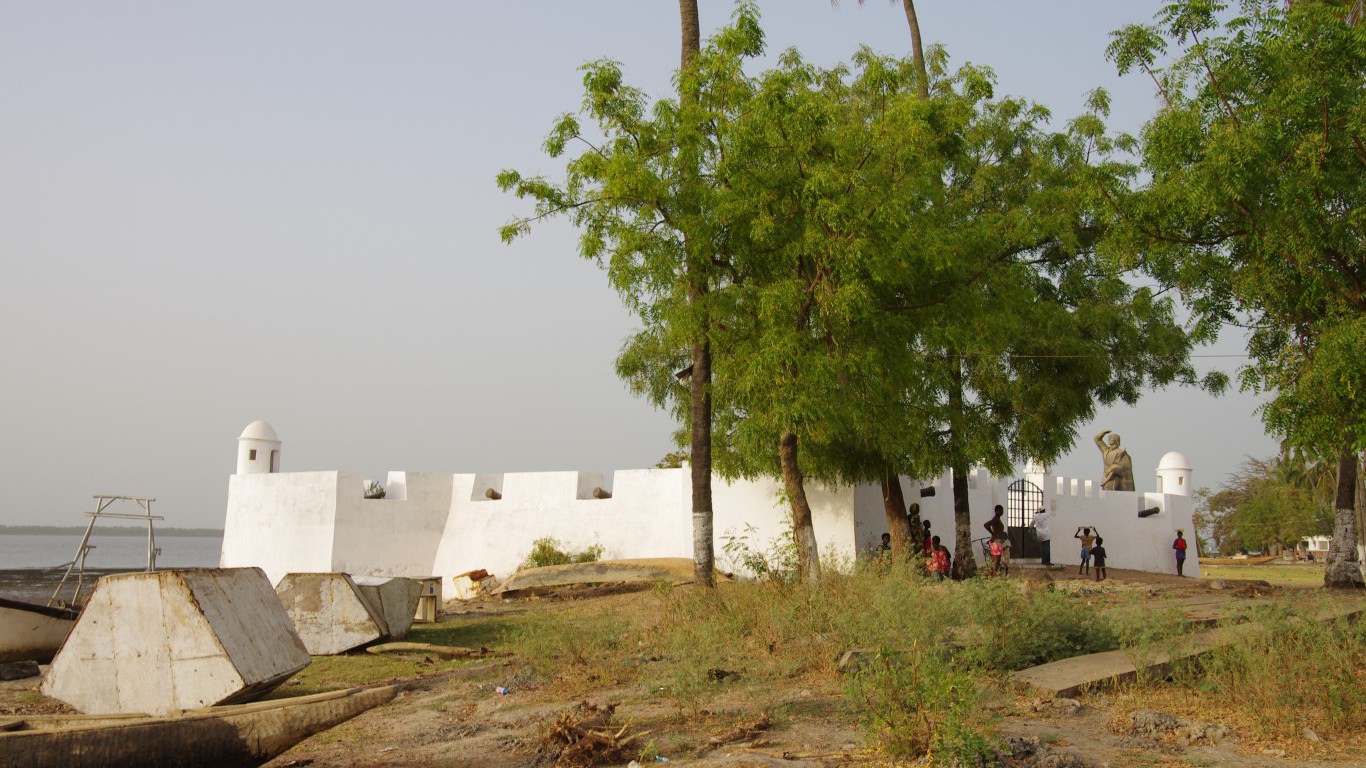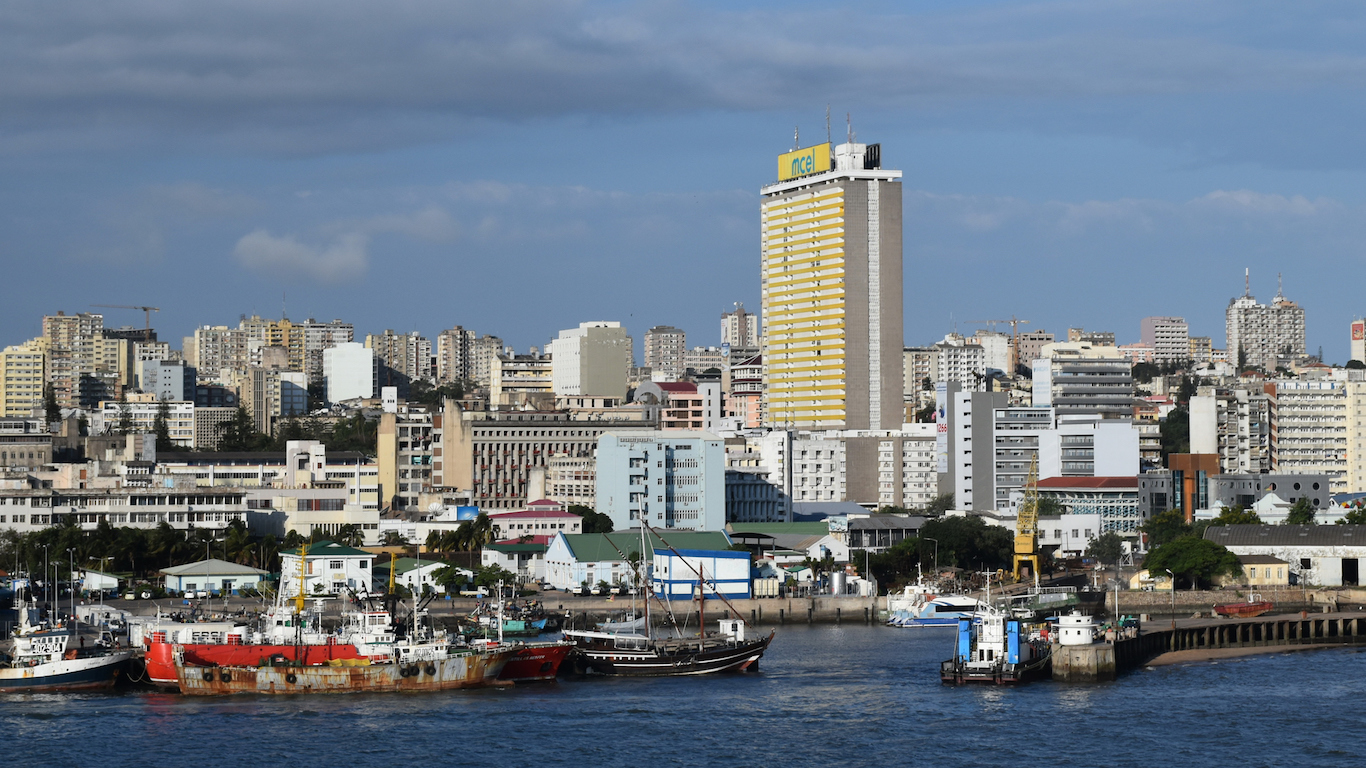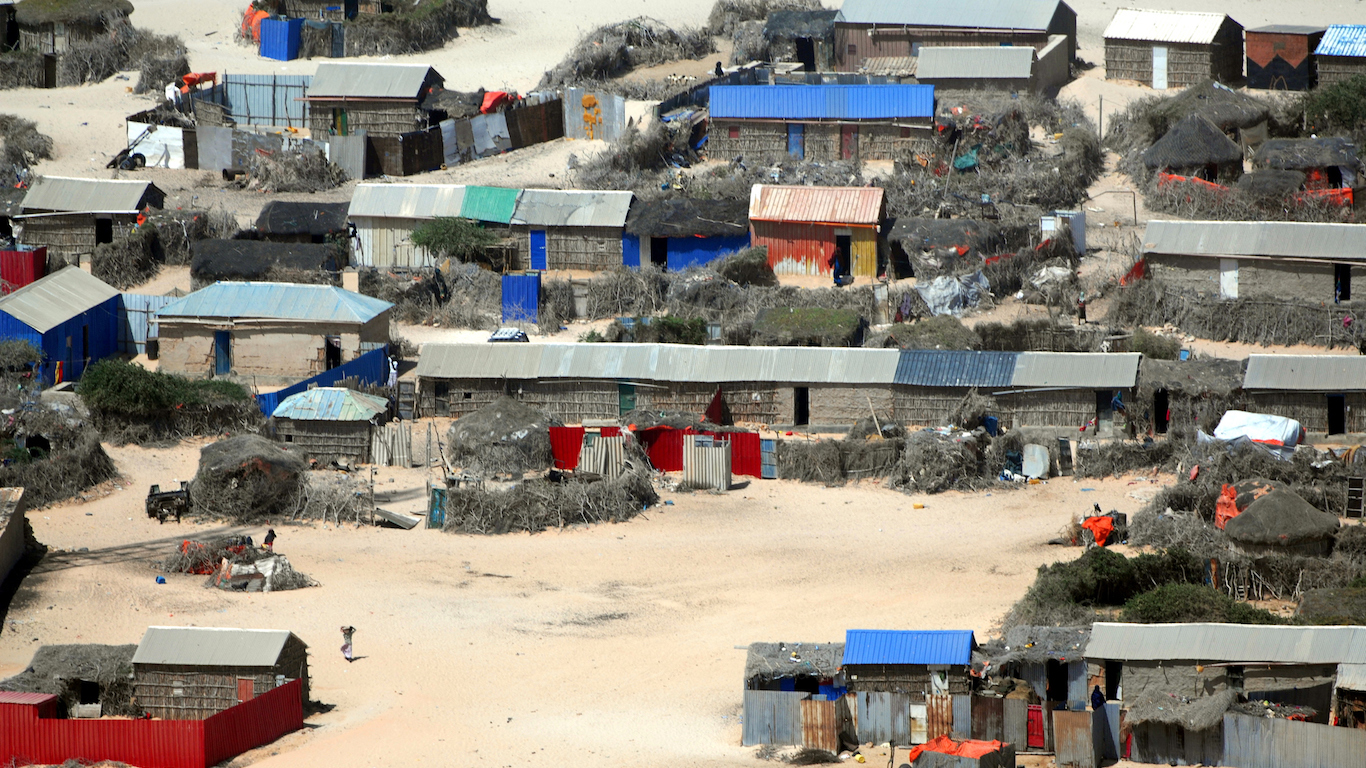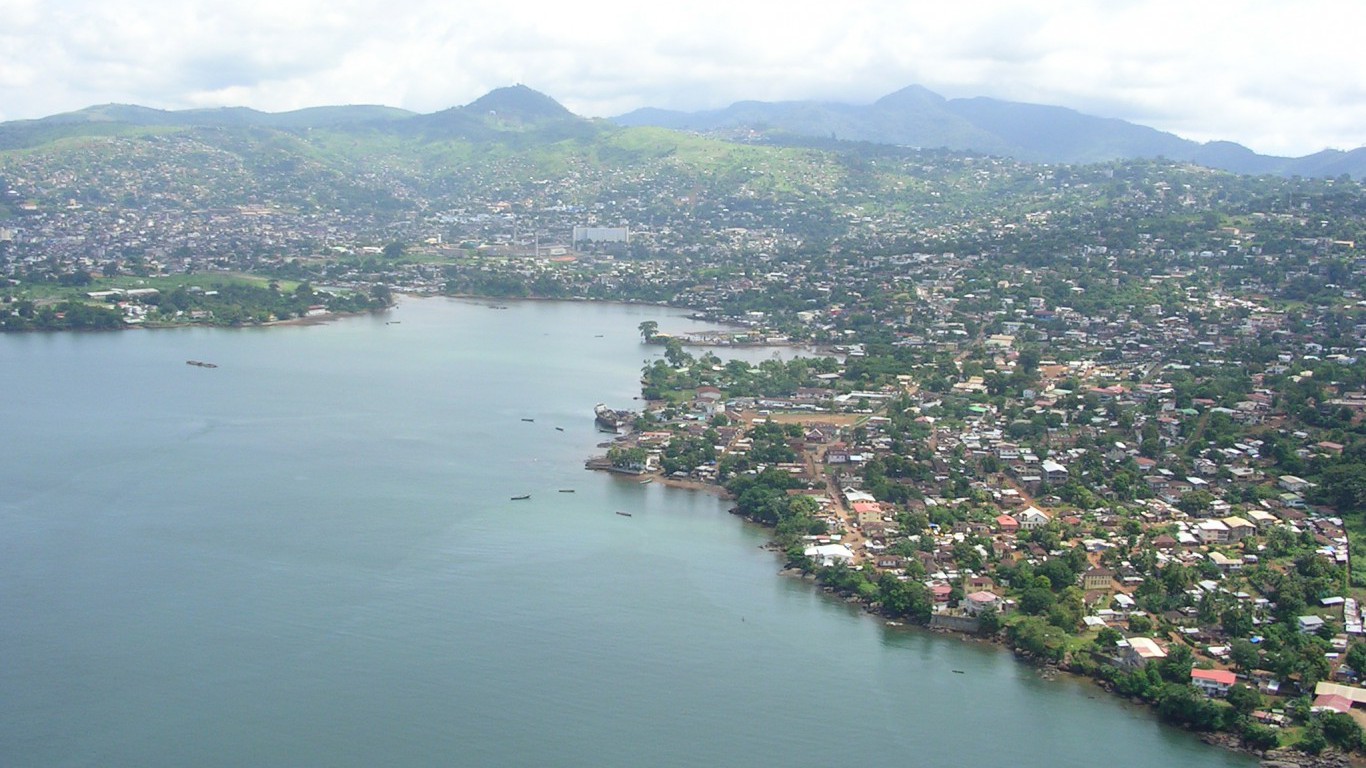Special Report
The Most (and Least) Healthy Countries in the World

Published:
Last Updated:

The average life expectancy at birth worldwide climbed from 52.6 years in 1960 to 71.9 years in 2015. The improvement in global longevity is largely the product of healthier lifestyles and advances in medical technology and treatment. Not all countries have benefited equally from improvements in health and health care, however. In some parts of the world, living to be 60 years old is still a rare occurrence. In others, living to be over than 80 is the norm.
Health outcomes often reflect the broader economic conditions in a country. The world’s healthiest countries are all highly developed with universal, largely taxpayer-funded health care systems. Meanwhile, the world’s least healthy countries struggle to provide basic services such as electricity and clean water to large swaths of their populations, let alone a health care system of any kind.
The implications of limited public works and health care infrastructure are staggering. In the least healthy countries, both infant and maternal mortality rates are many times higher than the global average and often hundreds of times higher than in the world’s healthiest countries. The least healthy countries also often have far greater than average incidences of contagious diseases.
On a global scale, factors such as public policy and infrastructure have a much greater bearing on public health than behaviors at an individual level.
24/7 Wall St. created an index that consists of life expectancy, infant mortality, maternal mortality, and incidence of tuberculosis to identify the most (and least) healthy countries in the world. Notably absent from the list is the United States, which ranks 34th in the world. The majority of the 10 healthiest countries are in Western Europe. The 10 least healthy countries are all in sub-Saharan Africa.
Click here to see the healthiest countries in the world.
Click here to see the least healthy countries in the world.
Click here to see our detailed findings and methodology.
The Healthiest Countries in the World

10. Israel
> Life expectancy: 82.1
> Infant mortality rate: 2.9 (per 1,000 live births)
> Health expenditure per capita: $2,599
> GDP per capita: $37,662
Israel is the only Middle Eastern nation — and one of only three countries not in Western Europe — to rank among the healthiest in the world. Israel’s 3.5 per 100,000 tuberculosis infection rate is nearly the lowest of any country and well below the comparable 140 per 100,000 global rate. Perhaps the most telling metric for the relative health of Israel’s population is the country’s 82.1 year life expectancy at birth, which is over a decade longer than average life expectancy worldwide and well above the 78.7 year U.S. average.
The population of the world’s healthiest countries are typically concentrated in urban areas. In Israel, 92.2% of the residents live in urban areas, well above the 54.3% global average.
[in-text-ad]

9. Spain
> Life expectancy: 83.4
> Infant mortality rate: 2.7 (per 1,000 live births)
> Health expenditure per capita: $2,966
> GDP per capita: $39,961
Spain’s life expectancy at birth of 83.4 years is nearly the highest in world and 11.5 years longer than the average life expectancy worldwide. Like most countries with the healthiest populations, Spain is relatively wealthy with greater than typical health care spending. The Western European country’s GDP per capita of nearly $40,000 is higher than that of the vast majority of countries. Additionally, the country’s annual public and private health care expenditures total nearly $3,000 per person — more than double the global per capita health expenditures of $1,271.
Like every other country on this list, Spain provides universal public health care. The Spanish National Health System covers most medical care without any cost to the patient.

8. Norway
> Life expectancy: 82.1
> Infant mortality rate: 2.1 (per 1,000 live births)
> Health expenditure per capita: $6,347
> GDP per capita: $72,702
Norway is one of four Nordic countries rank among the healthiest countries in the world. Relatively wealthy, Norway spends far more on health care on a per capita basis than most countries. Norway’s GDP per capita of $72,702 is eighth highest in the world. Similarly, the country’s public and private health care spending total is $6,347 per person per year, more than that of all but four other countries and about five times the comparable global spending rate.
The country’s high health spending has likely contributed to some positive health outcomes. For example, Norway’s life expectancy of 82.1 years is over a decade longer than it is worldwide and about 3.4 years longer than in the United States.

7. Sweden
> Life expectancy: 82.6
> Infant mortality rate: 2.4 (per 1,000 live births)
> Health expenditure per capita: $5,219
> GDP per capita: $53,150
Infant mortality and maternal mortality rates in a country can be a good indicator of the health of a country’s population as well as of the quality of the country’s health care system. The countries on this half of the list, including Sweden, share exceptionally low rates in both measures. In Sweden, the infant mortality rate is 2.4 per 1,000 live births, and the maternal mortality rate is 4 per 100,000 live births. Worldwide, the respective average rates are 30.5 per 1,000 and 216 per 100,000.
As a state with universal health care, all Swedish citizens automatically have health insurance, paid for by taxes. In addition to insuring coverage for all of its residents, Sweden’s national health care policy encourages local governments to engage in preventive medicine. These expenses lead to some of the highest per capita health spending in the world, at $5,219 per person.
[in-text-ad-2]

6. Italy
> Life expectancy: 83.5
> Infant mortality rate: 2.8 (per 1,000 live births)
> Health expenditure per capita: $3,239
> GDP per capita: $39,072
Like each of the healthiest countries in the world, Italy has established health coverage as a right. The state offers a public health plan to all of its citizens, although private medical insurance and care is also an option.
Italians are the longest-lived Europeans, with a life expectancy at birth of 83.5 years, which is close to five years longer than the U.S. life expectancy. Like many of the countries on this list, Italy’s high quality health care system will be put to the test in the coming years as the population ages. In addition to a high life expectancy, the nation has one of the lowest birth rates in the world, at just 8 births per 100,000, the second lowest birth rate, trailing only Japan.

5. Japan
> Life expectancy: 83.8
> Infant mortality rate: 2.0 (per 1,000 live births)
> Health expenditure per capita: $3,727
> GDP per capita: $44,247
Japan is the healthiest country in East Asia and one of the healthiest countries in the world. Japan’s life expectancy at birth of 83.8 years is the highest of any country with a population of at least 250,000.
Japan’s world leading health outcomes are attributable to a number of factors. As is the case in every other country on this list, every citizen of Japan is covered by a public health insurance program. The country’s health program will likely face serious budgetary stress in the coming years, as with the lowest birth rate with world, Japan’s population is rapidly aging.
[in-text-ad]

4. Poland
> Life expectancy: 78.2
> Infant mortality rate: 4.0 (per 1,000 live births)
> Health expenditure per capita: $1,570
> GDP per capita: $30,986
Poland guarantees health coverage for all of its citizens, although its residents may also opt to obtain private health insurance and care. Despite the universal health care coverage, health spending is quite low for a nation with such favorable health outcomes. The country’s total health expenditure per capita of just $1,570 is 53rd highest in the world and approximately one-sixth U.S. health spending per capita.
Infant mortality and maternal mortality rates are a strong indicator not just of the health of mothers and newborns, but also of a the overall population’s health and of the quality of medical care facilities. In Poland, four infants die before their first birthday per 1,000 live births and three mothers die in childbirth per 100,000 live births. These are far lower rates than worldwide averages of 30.5 infant deaths per 1,000 births and 216 maternal deaths per 100,000 births.

3. Greece
> Life expectancy: 81.6
> Infant mortality rate: 3.1 (per 1,000 live births)
> Health expenditure per capita: $2,098
> GDP per capita: $29,271
Greece is one of several Mediterranean countries to rank among the healthiest in the world. A low infant mortality rate can be indicative of the quality of the health care system and of good maternal health, and in Greece there are 3.1 infant deaths for every 1,000 live births — about 10 times less than the global average. The country’s life expectancy at birth of 81.6 years is also about 10 years longer than the average worldwide.
The country boasts one of the healthiest populations in the world despite the prevalence of some bad habits. For example, over half of all men and nearly one-third of women in Greece are smokers, compared to 34.8% of men worldwide and just 6.3% of women. Per-capita alcohol consumption is also higher than average in Greece.

2. Finland
> Life expectancy: 81.4
> Infant mortality rate: 1.9 (per 1,000 live births)
> Health expenditure per capita: $3,701
> GDP per capita: $44,978
Finland is the second healthiest country in both Scandinavia and the world. The country’s infant mortality rate of 1.9 deaths within 12 months of birth for every 1,000 live births is a fraction of the worldwide rate of 30.5 per 1,000 and is indicative of both an effective health care system and good maternal health. Finland’s infant mortality rate has improved considerably in recent decades. Currently, the publicly funded system sends every expectant mother a package of essentials for raising a newborn, which includes clothing, diapers, and towels. Additionally, the concentration of doctors in Finland is roughly double the global average.
[in-text-ad-2]

1. Iceland
> Life expectancy: 82.9
> Infant mortality rate: 1.6 (per 1,000 live births)
> Health expenditure per capita: $3,882
> GDP per capita: $55,006
Iceland ranks as the healthiest country in the world. It reports the world’s lowest infant mortality rate at just 1.6 deaths per 1,000 live births, compared to a world average of 30.5 infant deaths per 1,000 births. Iceland is tied with several other countries for the lowest maternal mortality rate. The nation has one of the highest life expectancies at birth, and incidence of infectious diseases like tuberculosis are close to the lowest of any country.
The country’s good health outcomes may be due in part not just to the quality of the health care system, but also to healthy behaviors of the population. For example, just 17% of men in Iceland smoke, compared to a global average of 34.8% of men.
The Least Healthy Countries

10. Liberia
> Life expectancy: 62.0
> Infant mortality rate: 51.2 (per 1,000 live births)
> Health expenditure per capita: $98
> GDP per capita: $925
By several measures of health outcomes, Liberia ranks as one of the least healthy countries in the world. For example, there are some 725 maternal deaths during childbirth for every 100,000 live births in the country, more than triple the comparable maternal mortality rate worldwide.
Like most of the least healthy countries, Liberia is poor. The country’s GDP per capita of $925 is lower than the vast majority of countries and nearly 18 times smaller than global GDP per capita. Residents of Liberia also likely struggle to access quality medical care. There is only one doctor for every 100,000 Liberians. In comparison, on average, there is about one doctor for every 1,000 people in the world. Additionally, fewer than 10% of the population has access to electricity.
[in-text-ad]

9. Chad
> Life expectancy: 52.6
> Infant mortality rate: 75.2 (per 1,000 live births)
> Health expenditure per capita: $79
> GDP per capita: $2,492
Health and health care in Chad are some of the worst in the world. Medical facilities in the African nation are sporadic and understaffed. According to the World Health Organization, there are just a few hundred doctors practicing in a nation of 14.5 million people.
Chad faces multiple ongoing health crises, including severe undernourishment and malnutrition of a significant portion of its population, as well as a clean water shortage. Barely half of Chadians have access to water that has been properly treated. The nation’s life expectancy at birth of just 53 years is 26 years shorter than that of the United States. Infant and maternal mortality rates are each among the five worst of any country.

8. Guinea-Bissau
> Life expectancy: 57.0
> Infant mortality rate: 57.8 (per 1,000 live births)
> Health expenditure per capita: $91
> GDP per capita: $1,908
Life expectancy at birth in Guinea-Bissau is just 57 years, or about 15 years below the global average. The country’s residents are particularly vulnerable in early life. About 58 infants for every 1,000 live births die before their first birthday in the West African nation, well above the 31 per 1,000 global infant mortality rate.
The country’s poor health outcomes are partially attributable to the relative lack of reliable utilities and public works infrastructure that residents of more developed countries take for granted. For example, more than 20% of the population lack access to treated water, and only 17% have access to electricity. In the more deprived rural areas, 40% of the population lack clean water, and only 4% have electricity.

7. Nigeria
> Life expectancy: 53.0
> Infant mortality rate: 66.9 (per 1,000 live births)
> Health expenditure per capita: $217
> GDP per capita: $6,043
Nigeria is Africa’s most populous nation, with nearly 186 million citizens. It also struggles with many of the health problems prevalent around much of the continent. Nigeria has an infant mortality rate that is more than double the world average, and a maternal mortality rate close to four times the global average. About one-third of reported deaths in the country are due to Malaria, HIV, or malnutrition. Due in part to each of these factors, life expectancy at birth in Nigeria is just 53 years, about 19 years below the global average.
[in-text-ad-2]

6. Mozambique
> Life expectancy: 57.6
> Infant mortality rate: 53.1 (per 1,000 live births)
> Health expenditure per capita: $79
> GDP per capita: $1,327
Unlike the countries with the healthiest populations, the least healthy countries are largely rural, and Mozambique is no exception. More than two-thirds the country’s population live in rural areas, and rural populations in Mozambique lack access to what would be considered necessities in more developed countries. For example, only 37% of Mozambique’s rural population have access to clean water, and just 6% have access to electricity.
The country’s poor health outcomes, like its life expectancy at birth of just 57.6 years, are also partially due to a lack of access to medical care. The country has one of the lowest concentrations of doctors in the world. Also, per capita private and public health care spending in the country is just $79 a year compared to the global average health care spending of $1,271 per person per year.

5. Democratic Republic of the Congo
> Life expectancy: 59.2
> Infant mortality rate: 72.0 (per 1,000 live births)
> Health expenditure per capita: $32
> GDP per capita: $810
For years, the Democratic Republic of Congo has been one of the most war-torn nations on Earth. As is usually the case with highly unstable, impoverished nations, a structured, adequate health care system is effectively non-existent. Total health expenditure per capita in the DRC is just $32 per person, nearly the lowest of any country on record. Health expenditure in the United States, in contrast, is $9,403 per capita, about 291 times that of the African nation, and the global average health care spending is $1,271 per person per year.
The DRC’s life expectancy is less than 60 years, and it has one of the higher death rates per capita. As is often the case with nations with severe health issues, the birth rate is arguably unsustainably high as it may strain the country’s already limited resources. There are 43 births in the DRC per 1,000 people annually, the fifth highest rate in the world.
[in-text-ad]

4. Somalia
> Life expectancy: 55.9
> Infant mortality rate: 82.6 (per 1,000 live births)
> Health expenditure per capita: N/A
> GDP per capita: N/A
There are 83 deaths of infants younger than 1-year-old for every 1,000 live births in Somalia, the third highest infant mortality rate in the world and nearly triple the global infant mortality rate. Additionally, life expectancy at birth in the East African country is just shy of 56 years, or about 16 years shorter than the global average. Health outcomes would likely improve with greater access to modern conveniences. Currently, just 32% of the population have access to clean water, and fewer than 20% have access to electricity.
Like many of the least healthy countries, Somalia is growing rapidly, putting additional strain on already scarce resources. In the last year, Somalia’s population grew by 2.9%, more than double the global population growth during that time of 1.2%.

3. Lesotho
> Life expectancy: 53.6
> Infant mortality rate: 72.4 (per 1,000 live births)
> Health expenditure per capita: $276
> GDP per capita: $3,917
An estimated 82% of Lesotho’s population have access to clean water, the largest share of any country on this list. Despite the stronger public works infrastructure compared to other countries on this list, Lesotho still faces a major public health crisis.
HIV is incurable and one of the leading causes of death worldwide. In Lesotho, one in every four residents age 15-49 is HIV positive, the second highest rate of any country considered. Partially because of the high HIV incidence rate, life expectancy in Lesotho is just 53.6 years, or 18.3 years below the global average.

2. Central African Republic
> Life expectancy: 51.4
> Infant mortality rate: 88.5 (per 1,000 live births)
> Health expenditure per capita: $25
> GDP per capita: $721
Life expectancy at birth in the Central African Republic is just 51.4 years, the lowest of any country in the world. One of the world’s least healthy countries, CAR is also one of the poorest. Annual GDP per capita in the landlocked sub-Saharan country is just $721, nearly 23 times less than the average global GDP per capita. A lack of access to basic amenities further underscores the abject poverty in CAR. Just 68.5% of the population have access to clean water, and only 12.3% have electricity.
People born in the CAR are less likely to make it to their first birthday than those in any other part of the world. There are 89 infant deaths for every 1,000 live births annually, more than double the global infant mortality rate of 31 per 1,000.
[in-text-ad-2]

1. Sierra Leone
> Life expectancy: 51.4
> Infant mortality rate: 83.3 (per 1,000 live births)
> Health expenditure per capita: $224
> GDP per capita: $1,883
Some 1,360 mothers die during childbirth for every 100,000 live births in Sierra Leone, the highest maternal mortality rate in the world. Additionally, the country’s life expectancy at birth of 51.4 years is the second lowest in the world and nearly 21 years shorter than the global average. Inadequate utilities and government services partially explain the country’s poor health outcomes. Just 63% of the population have access to clean water, and only 13% have electricity. Unhealthy behaviors likely also play a role. An estimated 60% of men in the country smoke, nearly the highest smoking rate of any country in the world.
Like most of the countries with the worst health outcomes, Sierra Leone is poor. The country’s GDP per capita of $1,883 is about $60,000 less than the U.S. GDP per capita.
Detailed Findings
Poor health outcomes in the least healthy countries are largely attributable to inadequate government services. In each of the 10 countries with the worst overall health outcomes, the share of the population with access to clean water is below the 91% worldwide average. In Somalia, fewer than one in three residents have access to clean water.
Similarly, Nigeria is the only country with the worst health outcomes in which over half the population have electricity.
Meanwhile, access to clean water and electricity is nearly universal in each of the 10 healthiest countries. Notably, each of the countries with the best health outcomes also has a publicly-funded universal health care system.
The inadequate public services in the least healthy countries are partially attributable to limited financial resources. Global economic output totalled about $16,215 per capita in 2016. GDP per capita in each of the least healthy countries is less than half the global figure. In three of the least healthy countries, GDP per capita was below $1,000.
In stark contrast, the healthiest countries tend to be wealthy. GDP per capita is higher than the global average in each of the world’s healthiest countries. In eight of the healthiest countries, GDP per capita is more than double the global figure.
The impact that public health policy, public works infrastructure, and access to utilities have on health outcomes across a population is difficult to understate. Behaviors such as excessive alcohol consumption and smoking are known to be detrimental on an individual level. Still, per-capita alcohol consumption or smoking rates are higher than average in the majority of the healthiest countries. Such unhealthy behaviors are generally less common in the least healthy countries.
Patterns in birth rates could spell trouble for many countries on both sides of this list in the coming years. Nine of the 10 least healthy countries have a faster population growth rate than the world as a whole, which could mean increased strain on already limited resources.
Meanwhile, Israel is the only country with the best health outcomes that is growing at a faster rate than the world as a whole. In four of the healthiest countries, the population is shrinking. As the population ages and fewer people are working and paying taxes in the coming years, publicly-funded health care systems could face a funding crisis.
Methodology
To determine the most and least healthy countries, 24/7 Wall St. reviewed annual infant mortality rates (per 1,000 live births), maternal mortality rates (per 100,000 live births), life expectancy at birth, and the incidence of tuberculosis — a widely-used approximation of infectious diseases incidence — in 179 countries from data published by the World Bank. We normalized values using the min-max method and took the geometric mean to compare countries.
Up-to-date health measures comparable globally are often very limited. We only considered data that was available for at least 75% of the countries on our list, and we excluded countries with a population smaller than 250,000. All data is for the most recent year available.
In addition to health measures used in the ranking, we collected data on access to health services, including the number of doctors per 1,000 people. We looked at the share of a country’s population with access to clean water, clean air, and electricity — all data came from the World Bank.
We also reviewed per-capita health expenditure by public and private sources, as well as adult literacy rates, unemployment rates, population size, alcohol consumption, and smoking rates. All economic data came from the World Bank.
The thought of burdening your family with a financial disaster is most Americans’ nightmare. However, recent studies show that over 100 million Americans still don’t have proper life insurance in the event they pass away.
Life insurance can bring peace of mind – ensuring your loved ones are safeguarded against unforeseen expenses and debts. With premiums often lower than expected and a variety of plans tailored to different life stages and health conditions, securing a policy is more accessible than ever.
A quick, no-obligation quote can provide valuable insight into what’s available and what might best suit your family’s needs. Life insurance is a simple step you can take today to help secure peace of mind for your loved ones tomorrow.
Click here to learn how to get a quote in just a few minutes.
Thank you for reading! Have some feedback for us?
Contact the 24/7 Wall St. editorial team.